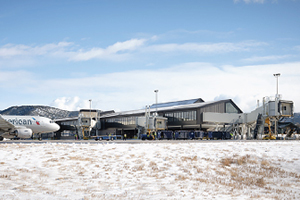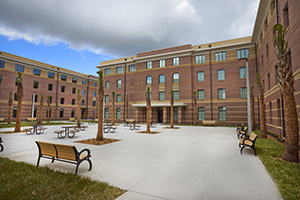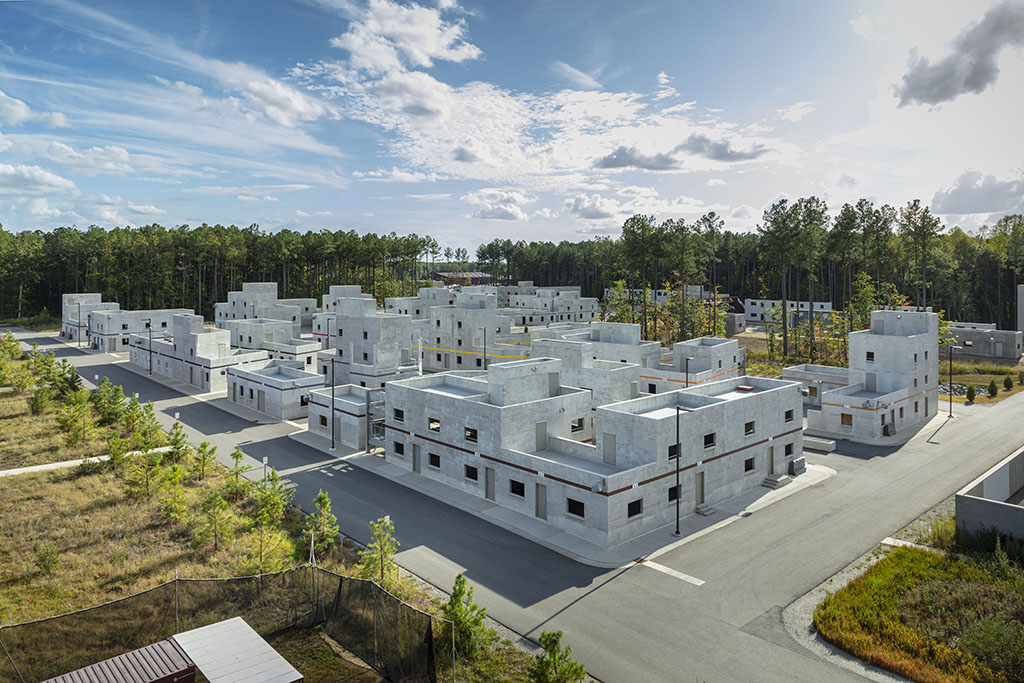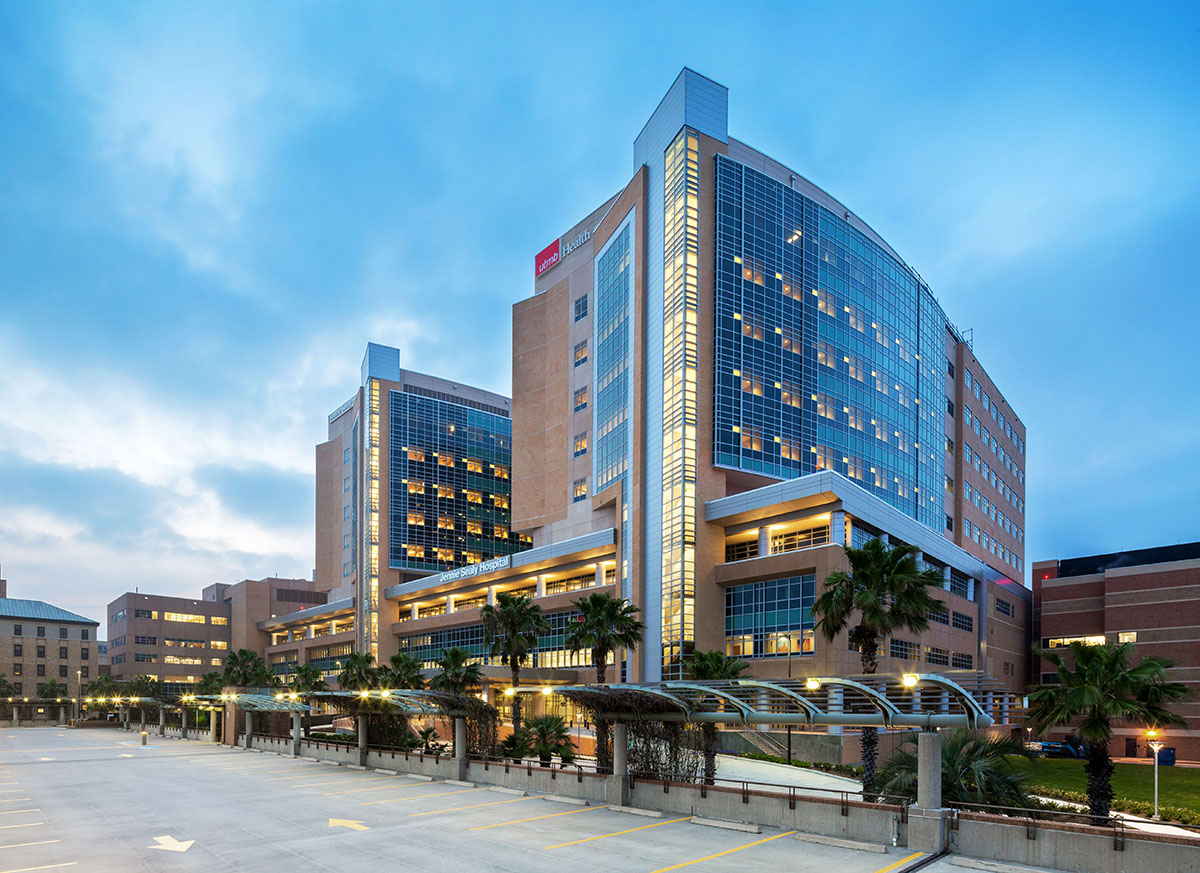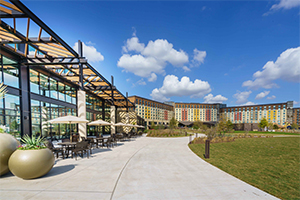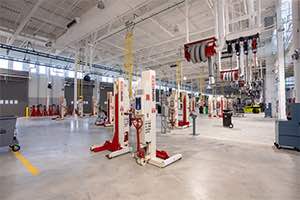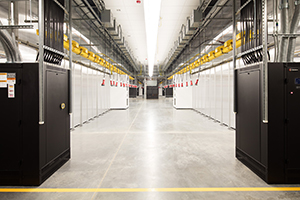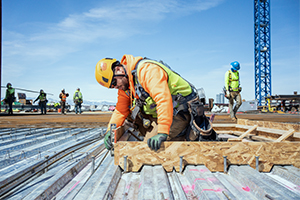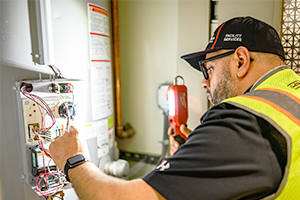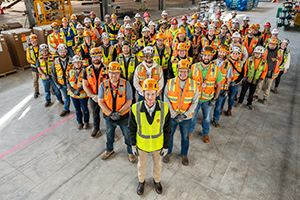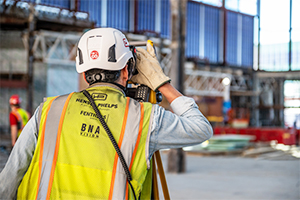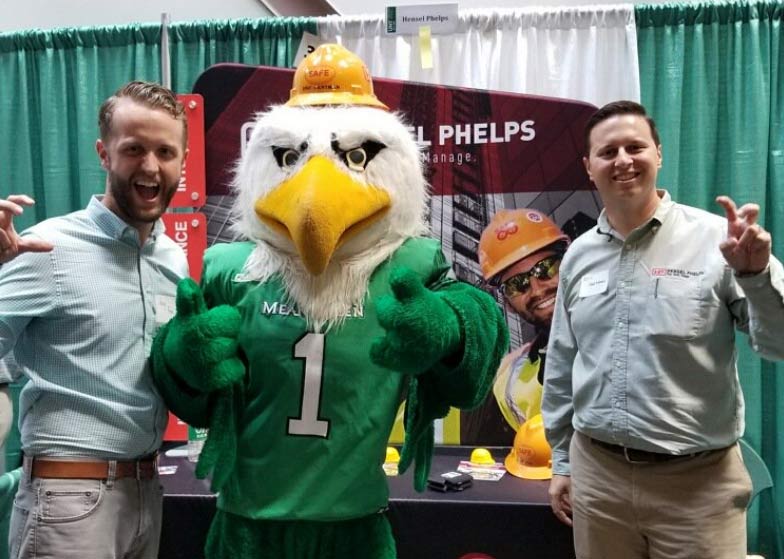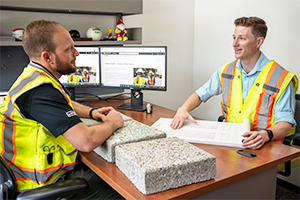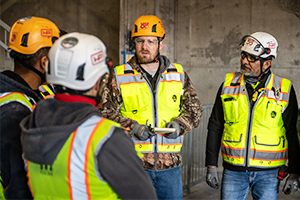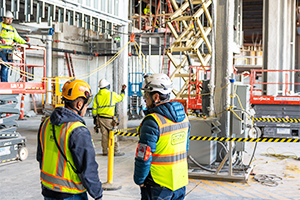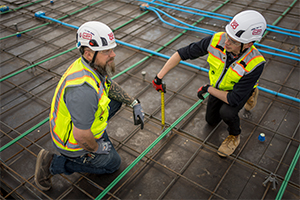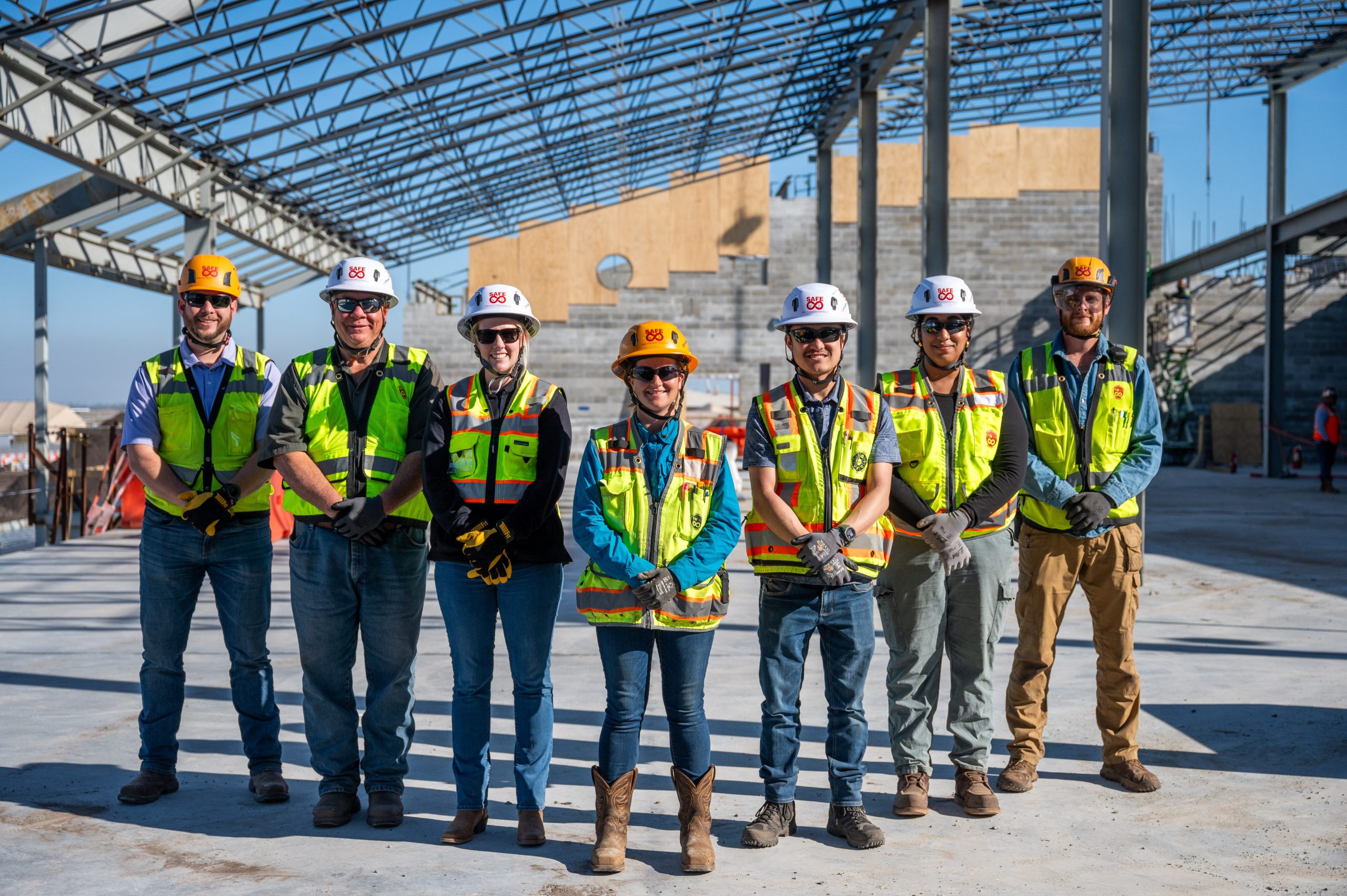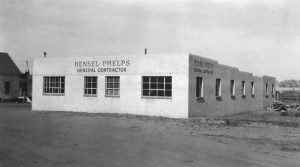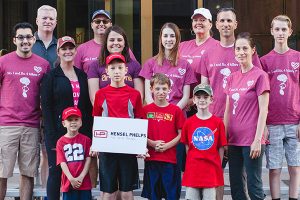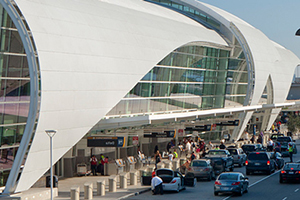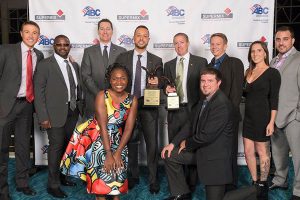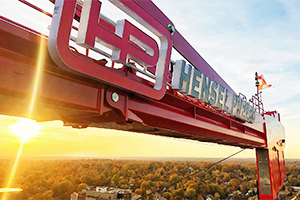
Hensel Phelps is constructing the United Parcel Service (UPS) Northwest Aircraft Maintenance Complex, which includes a large apron, hangar complex and engine storage facility located at the Louisville Muhammad Ali International Airport in Louisville, Kentucky. The facility’s hangar aims to support UPS’ largest commercial aircraft, the 747-8F. The fleet is growing to meet increasing global demands, requiring more maintenance facilities to maintain its maintenance schedule. The project includes the construction of a 155,000 SF clear span, single bay, multi-position hangar; a two-story office and shop complex; and an engine and bulk storage facility. The hangar will be able to handle two of the 747-8F aircraft simultaneously.
This is the largest hangar currently being constructed in the United States. The box truss measures 380 feet long—longer than the length of a football field—and weighs 1.7 million pounds. To accommodate both the size and weight of the truss, the Hensel Phelps project team implemented a strand jack system—a computer-operated hydraulic lifting system used for heavy load capacity, as well as minimized equipment on-site to create a safer work environment. This is the first time a Hensel Phelps project utilizes the strand jack system. Consequently, the project team went above and beyond to maintain exemplary safety measures on-site and identify the most efficient way to maximize system use.
Pre-Planning for the Lift
The pre-planning effort put into researching and understanding the strand jack system set the UPS project team up for success before construction began, ensuring a safe work zone and successful lift. Weekly jobsite meetings were held leading up to the installation to maximize collaboration with all trade partners involved. This collaboration included hiring a 3rd party engineer to check and approve the erection plan, weekly meetings to calibrate the equipment and intentional discussions to troubleshoot every possible scenario that could arise with the new system. In addition, preliminary measurements were taken in the weeks leading up to the lift to survey the cumulative effect of the ambient temperature on the steel box truss structure, as temperatures fluctuated from morning to evening. These measurements communicated the average expansion and contraction of the steel box truss during hot and cold weather, leading the team to select an evening-to-night timeline for erection.
Seeing the Lift in Action
To minimize the safety risks associated with erecting the box truss piece by piece in the air, the team assembled it on the ground, allowing the strand jack system to lift the entire box truss as one piece. The strand jack was stationed at the top of the structure and supported by temporary shoring; it pulled the truss up into place inch by inch. This system was entirely operated via a computer and one operator located outside of the no-work zone within view of the operation. Ironworkers remained on-site for possible adjustments but were not required for the lift itself until the steel was ready to be bolted. This removed the human safety factor inherent in critical lifts. Moving at a pace of 18 feet-per-hour, lifting the box truss into place took approximately seven hours and an additional three days to fully support it. The typical protocol for this system requires that 50% of the bolts be in place before release. However, due to the magnitude of the steel, the project team elected to secure 100% of the bolts into place. A total of 1,216 bolts are used to hold the structure together.

Safety Benefits of Strand Jack System
The use of the strand jack system brings an array of safety benefits to the project team and jobsite:
- Cranes: The elimination of multiple cranes for large lifts such as this profoundly impacts cost and time savings, and provides tremendous mitigation to safety risks associated with simultaneously operating two cranes for the lift. This project is also located adjacent to an active runway which requires close coordination of all crane use on-site with UPS and the FAA. Using this system allowed the team to cut the time needed to erect two cranes and the collaboration required to work within aviation restrictions.
- Fail Safe: The safe zone was established without having to account for a crane’s swing radius or possible failure resulting in the box truss falling. If the strand jack were to fail, it would simply halt any movement by activating a fail-safe freeze and holding the box truss in place until the system was repaired.
- Human Factor: The system eliminates human safety risks and increases the protection of all people on the project by utilizing a computer system that controls the strand jack. The elimination of two cranes and the fail-safe system keeps our people safe while allowing us to make major progress on the project.

The seamless accomplishment of the strand jack lifting system reflects Hensel Phelps’ dedication to safety and innovation as we confidently look to the future of construction. The UPS Northwest Aircraft Maintenance Complex is slated to complete this fall. We are excited to see how Hensel Phelps will continue to expand its performance capabilities—the UPS project team has set the “box truss” high!



